Species Composition, Abundance and Population Structure of Indoor Resting Mosquitoes in Two Villages of Sudan
Mashair Sir El Khatim Mustafa1*, Zairi Jaal2, Sumaia M A Abukashawa3, Siti Azizah Mohd Nor4
1Department of Biology and Chemistry, Al Butana University, 200, Rufaa, Sudan
2School of Biological Sciences, Universiti Sains Malaysia, 11800 Penang, Malaysia
3Faculty of Science, Department of Zoology, University of Khartoum, Sudan
4Institute of Marine Biotechnology, Universiti Malaysia Terengganu, 21030 Kuala Terengganu, Malaysia
*Corresponding Author: Mashair Sir El Khatim Mustafa, Department of Biology and Chemistry, Al Butana University, 200, Rufaa, Sudan.
Received: 06 February 2023; Accepted: 15 February 2023; Published: 17 February 2023
Article Information
Citation: Mashair Sir El Khatim Mustafa, Zairi Jaal, Sumia Abu Kashawa, Siti Azizah Mohd Nor. Species Composition, Abundance and Population Structure of Indoor Resting Mosquitoes in Two Villages of Sudan. International Journal of Plant, Animal and Environmental Sciences 13 (2023): 03-12.
View / Download Pdf Share at FacebookAbstract
Background: Frequent monitoring of mosquito vector populations is a strategy of great importance for reducing risks of disease occurrence. In Sudan, malaria is still a major threat to public health. Insecticide-based control has been undertaken for years, but there is no noticeable decrease in malaria infection nationwide.
To overcome this situation, a better understanding of the mosquito vector breeding site ecology is relevant. Here, we investigate the species composition of malaria vectors, breeding sites, seasonal abundance, and population structure in two different villages.
Methodology: Monthly sampling of adults and larvae were performed in Abu Algoni (Sennar State) and Algerif West (Khartoum State) based on the prevalence of the vector and malaria parasite from June 2010 to May 2011. In total, 4,932 mosquitoes comprising of 3047 larvae and 1885 adults (males and females combined) were sampled. During each visit, immature stages were collected from potential breeding sites using dipping technique. In addition, adults were collected indoors from houses by aspiration and indoor pyrethrum spray methods. Mosquitoes were identified morphologically, the Anopheles gambiae complex identified to species level using well accepted morphological keys and PCR amplification. The physiological status of all An. arabiensis females were initially inspected by eye and then confirmed under the microscope after dissection of the abdomen. The proportion of fed, unfed, half-gravid and gravid were counted. Unfed and freshly fed females collected by indoor resting spray catch with developing ovaries not beyond Christopher’s stage II were dissected and examined monthly for parity rate and estimation of mosquito longevity.
Environmental parameters namely temperature, rainfall and humidity were obtained from
Keywords
Anopheles arabiensis; Anopheles rufipes; Species composition; Seasonal abundance; Population structure
Anopheles arabiensis articles; Anopheles rufipes articles; Species composition articles; Seasonal abundance articles; Population structure articles
Article Details
List of abbreviations:
IRS: Indoor Residual House Spraying; ITNs: Insecticide-Treated Bed Nets; PCR: Polymerase Chain Reaction; WHO: World Health Organization
1. Background
Malaria is a major public health problem in Sudan leading to morbidity and mortality. Symptomatic malaria accounts for 7.8% of out-patient clinic visits and approximately 12.2% of hospital admissions [1]. About 87.6% of malaria cases in Sudan are due to Plasmodium falciparum, while P. vivax accounts for 8.1% [1]. In the states of North Darfur, West Darfur, South Darfur, River Nile and Khartoum, P. vivax and mixed infections of P. falciparum and P. vivax can reach more than 15% [1]. Transmission occurs all the year round in the south but is more seasonal in the northern states, peaking at the end of the rainy season [1].
Thirty one species of Anopheles have been identified in Sudan but only a handful is malaria vectors [2]. Anopheles gambiae s.s complex and An. funestus s.s, are the important malaria vectors in the southern parts of Sudan and their vectorial capacity may parallel that of An. arabiensis [3] which is considered to be the main malaria vector in Sudan [4]. Anopheles arabiensis distribution extends from the south up to the borders with Egypt [5,6]. Other anopheline mosquitoes present in Sudan such as An. nili and An. rufipes are of no medical significance due to their predominant zoophilic tendencies and their extremely low densities even during rainy season [2]. In the savanna area of Central Sudan, it has been found that Anopheles mosquitoes disappear during the dry months of the year and reappear during or soon after the first rainfall [7].
Anopheles arabiensis shows a remarkable tolerance to water shortage and low humidity [8,9]. This vector was documented to live in dormancy during the dry season in areas along the western bank of the White Nile between Khartoum and Jabel Aulia [7]. During the periods of aestivation, often lasting several months, An. arabiensis may take several blood meals, but the gonotrophic maturation is arrested or proceeds very slowly. The density of this vector reaches its maximum during the rainy season, especially in irrigated areas [3]. Anopheles arabiensis occurs in arid areas, but is also associated with rivers in Niger, Mali and the River Nile in Sudan [10].
In Sudan the use of insecticides is the most important strategy for controlling malaria vectors through Indoor Residual House Spraying (IRS) and more recently, the use of Insecticide-Treated Bed Nets (ITNs) [11]. Current surveys of An. arabiensis show high levels of DDT, malathion, Fenitrothion, Bendiocarb, Propoxur, deltamethrin, lambdacyhalothrin and permethrin resistance in the eastern Sudan, El Rahad, Gezira and Central Sudan [12-15].
An ecological study of An. Arabiensis involving breeding habitat, distribution, and seasonal abundance are important factors in understanding the vector’s role in malaria transmission and therefore crucial in formulating and developing control programs.
This study was carried out to investigate the seasonal abundance and distribution of the malaria vector, An. arabiensis in association with climatic factors, in two villages with high malaria infection rate. Specifically, it was aimed to capture both spatial and temporal distribution patterns of Anopheles arabiensis in these two study sites and to estimate the parity rate in relation to the transmission of malaria. Findings gathered in this study will aid on the deployment of proper malaria vector control tools in these two study villages at specific periods and locations to reduce malaria transmission risks. Abu Algoni is a highly endemic malarial area, while Al Gerif West is considered as low malarial transmission area.
2. Materials and Methods
The selection of the villages was based on the prevalence of the vector and malaria parasite Federal Ministry of Health Sudan (FMOH) report. These selected areas were;
Algerif West Farm (AW) which lies on the western bank of the Blue River Nile in Khartoum state (latitude 15º 35`394 N and longitude 32º 35’ 160 E). This farm has citrus fruit trees, cattle, and chicken farming. It is irrigated through water supply from the Blue River Nile. The land is composed of fertile flat clay soil. Abu Algoni (AA) is a village in Sennar State (latitude 13º 31`N and longitude 33º 38`E. The soil, mainly alluvial, is naturally very fertile. The main economic activity is the agriculture of sorghum and cotton through the irrigated scheme of Suki. There is a sugar factory in Sennar, and a number of fruit farms (including bananas and mangoes) located on the banks of the Blue Nile.
3. Entomological Surveys
3.1 Larval collection and detection of breeding habitats
The survey of mosquito breeding sites in and around Algerif West and Abu Algoni villages took place during the study period from June 2010 to May 2011. All possible sites were visited including the surrounding farms. Larval samples of various life stages were routinely collected every month from a fixed productive site near the main waterworks of the village from water pools created by the running water, water draining into the vegetation from canals as well as from animal hooves.
The presence of larval anopheline mosquitoes were inspected by dipping or netting collection methods. Standard dipping collection was conducted using a ladle of 8 cm diameter and 3 cm deep with a metal handle of 50 cm length. Ten random dips were taken from fixed breeding sites for each sampling. The ladle was lowered gently at an angle of about 45º until one side was just below the surface. Then the samples were collected in large plastic containers using a pipette and aquatic natural predators (dragonflies, water beetles, tadpoles, etc.), when found were removed. The water samples were then transferred to the laboratory. The larvae were reared in the laboratory till the adults emerged and identified morphological.
3.2 Adult collections
Anopheline populations at Algerif West and Abu Algoni villages were sampled over 12 months beginning from June 2010 to May 2011. Spray captures of resting adults inside houses were done once a month throughout the period following the standard procedures [16]. Three mosquito collectors assisted in the field work throughout the study. Two methods were used for the collection of adult Anopheles mosquitoes resting inside houses namely indoor spray collection and aspiration collection methods.
At the onset of the study, consent was obtained from the householders to voluntarily participate in this study. Indoor spray collection (pyrethrum spray collection or knock down collection) method was carried out early in the morning, usually between 6-10 am. For this collection 10 houses were randomly selected as fixed capture stations, taking into consideration the following criteria; 1. each house is mainly built of mud with thatched roof, two windows and unscreened door 2. the houses are occupied by a number of people and near to one or more of mosquito breeding sites. House occupants were first requested to leave their rooms and then the whole floor surfaces as well as beds and other areas were completely covered from wall to wall with white cloth sheets. All windows, door, eves and other openings through which mosquitoes could otherwise escape were firmly closed. The house was filled with mist of 0.2% solution of pyrethroid diluted in kerosene using hand atomizer (spray pump) at minimum capacity. After spraying, the house was kept closed for 10 minutes and then opened to collect mosquitoes found on the sheets. Dead mosquitoes were placed into a plastic cup lined with moist cotton wool and covered with a damp filter paper. Samples were transported to the laboratory for examination.
Resting adult females of morphologically identified An. arabiensis from unsprayed houses were aspirated using sucking tubes (aspirator). The mosquitoes collected were emptied into a plastic cup covered with mosquito net with a central hole plugged with a wet piece of cotton wool. Samples were transported to the insectary, well protected to prevent mortality by adding 10% sugar-soaked cotton balls and maintaining humidity. Fed and unfed females were also dissected under a binocular microscope for their ovaries and their parity status, determined based on the Detinova method as described by Gillies [19], which relies on the presence or absence of coiled tracheolar skeins in fresh ovaries.
3.3 Laboratory techniques:
Adults and larval mosquitoes were morphologically identified to species level using the morphological keys of Gillies and De-Meillon [17]. The numbers were counted for An. arabiensis. Polymerase Chain Reaction (PCR) analysis was conducted for up to genus? not species level? identification using the rDNA-PCR method because individual species within the Anopheles gambiae species complex cannot be precisely identified by morphology alone [18].
Specimens were classified according to sex? based on the abdominal appearance according to the Sella scale. The ovaries were dissected following the procedure described by WHO [16] to determine the parity rate.
All An. arabiensis females were eye-checked for physiological status, female ovarian were dissected for parity rate and the resulting proportion of fed, unfed, half-gravid and gravid counted, taking into account location and season, and proportion of each stage analysed.
These proportions were used to calculate overall and seasonal mean feeding rates for both villages as follows: seasonal mean feeding rates=number of fed females + half-gravid/ (fed + unfed + gravid females) x100.
The parity rate was calculated as the Parity rate=Number of parous females/Number of females examined [20] x100.
3.4 Data analysis
All data collected during the study was analyzed using the computer program SPSS (Statistical Package for Social Science) for windows version 18. One-way ANOVA was conducted to assess whether there was significant difference between number of larvae and number of female by season. T-test was done to examine any significant difference between the mean of female and larvae within the AA and AW. Pearson?s correlation test was done to investigate the relationship between seasonal abundance of mosquitoes, parous rate and the climatic factors like temperature, rainfall and relative humidity.
4. Results
PCR results identified all Anopheles specimens as belonging to An. arabiensis (Figure 1). Table 1 shows the Anopheles collections and their seasonal variations in Abu Algoni and Algerif West. A total of 4,587 number of females were collected during this survey, 73.5% of which originating from Abu Algoni. In this village, 59.4 (2,007/3,377) and 40.6% (1,370/3,377) of the mosquitoes collected were at the larval and adult stages, respectively. In Algerif West, the larval population collected (85.9% = 1,040/1,210) was much higher than that of adults (14.1% = 170/1,210). The population sizes of the two developmental stages exhibited different seasonal variation patterns according to site. In both sites, the larval population size increased sharply from Cool Dry Season (CDS), reaching peaks during rainy season (RS); however, there was far more larvae in Abu Algoni during Hot Dry Season. (HDS). In both villages, more than 80% of the total adult collections resulted from pyrethrum spray method. In Abu Algoni, the adult population size gradually increased when progressing from HDS to CDS to RS, which recorded 75.8% (1,039/1,370) of the collections. Similar variation pattern of abundance was observed in Algerif West, but there were far more adult mosquitoes in Abu Algoni. The t-test demonstrated highly significant differences (P< 0,01) between number of females in the two areas while number of larvae are not significant (P>0.05). The one-way ANOVA revealed that both number of females (df=2, F=32.867, P<0.01) and number of larvae (df=2, F=7.919, P<0.01) were significantly variable during the three seasons in Abu Algoni.
|
Abu Algoni |
Algerif West |
Total |
|||||||
|
HDS |
CDS |
RS |
Sub-total |
HDS |
CDS |
RS |
Sub-total |
||
|
Larvae |
241 |
132 |
1634 |
2007 |
6 |
79 |
955 |
1040 |
3047 |
|
Adult (ASP) |
12 |
54 |
160 |
226 |
2 |
14 |
17 |
33 |
259 |
|
Adult (IS) |
29 |
236 |
879 |
1144 |
4 |
28 |
105 |
137 |
1281 |
|
Total |
282 |
422 |
2673 |
3377 |
12 |
121 |
1077 |
1210 |
4587 |
Table 1: Anopheles arabiensis populations collected in Abu Algoni (Sennar State) and Algerif West (Khartoum State) from June 2010 to May 2011 in relation to season and collection techniques. “HDS” stands for Hot Dry Season; “CDS” stands for Cool Dry Season; “RS” indicates Rainy Season. ASP stands for Aspiration collection methods and IS indoor spray collection.
Table 2 depicts the Anopheles faunal composition in Abu Algoni and Algerif West. Anopheles gambiae and An. rufipes were the two species found. Anopheles arabiensis, the only member of the An. gambiae complex, as revealed by PCR, was encountered throughout the survey period in both villages, but in greater numbers in the Abu Algoni. In both Abu Algoni and Algerif West, this species was more abundant during CDS and RS.
|
Abu Algoni |
Algerif West |
|||||||
|
HDS |
CDS |
RS |
Sub-total |
HDS |
CDS |
RS |
Sub-total |
|
|
An. arabiensis |
41 |
278 |
1039 |
1358 |
6 |
42 |
122 |
170 |
|
An. rufipes |
0 |
12 |
0 |
12 |
0 |
0 |
0 |
0 |
|
Total |
41 |
290 |
1039 |
1370 |
6 |
42 |
122 |
170 |
Table 2: Anopheles faunal composition in Abu Algoni (Sennar State) and Algerif West (Khartoum State) sampled from June 2010 to May 2011.
Table 3 summarizes the different physiological status of An. arabiensis and their seasonal variations. A total of 1,532 An. arabiensis exhibiting four feeding status were collected, comprising of 1,362 from Abu Algoni and 170 from Algerif West. Overall, the mean feeding rate of An. arabiensis recorded in Abu Algoni (768/1,362 = 56.4%) was similar to that obtained in Algerif West (99/170 = 58.2%), but the seasonal feeding patterns differed between the two villages. In Abu Algoni, the feeding rate of An. arabiensis population was 53.6% (21/41) during HDS. This rate slightly decreased during CDS (135/282 = 47.9%) and peaked during RS (612/1039 = 59.0%). Similar variation patterns was observed in Algerif West, but the feeding rates obtained during HDS (3/6 = 50.0%) and RS (76/122 = 62.3%) were slightly higher than those recorded during the same periods in Abu Algoni. The mean parity rates of An. arabiensis in Abu Algoni tended to be slightly greater than that obtained in Algerif West [79.4% (312/393) vs. 72.1% (49/68)]. In Algerif West, the parity rate during CDS was 72.7% (8/11) and similar to the rate in RS (41/57 = 71.9%). The values of this parameter during the same seasons (CDS and RS) tended to be high in Abu Algoni [75.0% (51/68) and 81.2% (247/304)] when compared to those from Algerif West. The parity was not assessed during HDS in this village because no fed or unfed female was collected; during the same period. Approximately 66% (14/21) of dissected An. arabiensis females from Abu Algoni was parous. It is interesting to note that in both villages, the number of An. arabiensis gravid females increased as season progressed, although the seasonal numbers of such females were far higher in Abu Algoni.
|
Abu Algoni |
Algerif West |
|||||||
|
HDS |
CDS |
RS |
Sub-total |
HDS |
CDS |
RS |
Sub-total |
|
|
Unfed |
1 |
24 |
66 |
91 |
1 |
2 |
18 |
21 |
|
Fed |
19 |
41 |
238 |
298 |
0 |
9 |
48 |
57 |
|
Half-gravid |
2 |
94 |
374 |
470 |
3 |
11 |
28 |
42 |
|
Gravid |
19 |
123 |
361 |
503 |
2 |
20 |
28 |
50 |
|
Nulliparous |
7 |
17 |
57 |
81 |
0 |
3 |
16 |
19 |
|
Parous |
14 |
51 |
247 |
312 |
0 |
8 |
41 |
49 |
Table 3: Population structure of An. Arabiensis.
Figure 2 shows that adult abundance was relatively high during the period June-September 2010, and peaked in October in Abu Algoni. Their abundance sharply decreased thereafter and mosquito adults were nearly imperceptible from January to May 2011. In Algerif West as shown in Figure 2, mosquito abundance was very low from June to December 2010 and adults were unnoticeable from January to May 2011.
In Abu Algoni, larval abundance in 2010 gradually increased from June, peaked in August and progressively decreased to only three individuals in December of the same year. The larval populations rebounded during early 2011, with major peak (100 individuals) recorded in April (Figure 2). In Algerif West, a similar variation of larval abundance was observed, but the peak was attained in September and was minor compared to that of Abu Algoni. In Algerif West, larval abundance was very low in January 2011 and larvae were not found thereafter (Figure 3).
The parity of An. arabiensis exhibited different variation patterns between Algerif West and Abu Algoni. In the first village, this parameter increased from June to attain a first peak in August. A similar trend was observed in Algerif West, but the number of parous An. arabiensis was lower compared to Abu Algoni. In this latter village, the parity rate recorded a second peak in August thereafter until October, a time when the number of parous females peaked in Algerif West. In Algerif West as well as Abu Algoni, the number of parous females increased from November 2010, attaining major peaks in January 2011. The parity rate in both villages sharply decreased in the next month. No An. arabiensis was found for the rest of 2011 in Algerif West, whereas parous females were still present in considerable numbers from March to May of the same year (Figure 4).
4.1 Correlations between An. arabiensis abundance (larval and female) with-climatic factors
In Abu Algoni, An. arabiensis female adult populations varied considerably throughout the monthly sampling period, as did the measured climatic factors. From June to July 2010, the number of females increased with increasing rainfall, but decreased in August, the month that recorded the highest rainfall. After August 2010 the female population rebounded and peaked in October. During this period (August-October 2010), there was much less rainfall and the environment was drier. At the end of the rainy period (November), the number of females was low and remained almost content when rains were scarce and humidity low (December-May 2011) (Figure 5). Larval populations in Abu Algoni (AA), moisture conditions were low and almost constant during the survey period, except the slight increase observed from July to September 2010. Furthermore, it often rained during the early months of the survey (especially in July and August 2010); however, there were no rainy days thereafter. Concomitant with increased rainfall events and relative humidity, mosquitoes were present in large numbers, in particular larvae. Larval populations sharply decreased from August towards September 2010, a period that corresponded with decreasing rainfall events. This, in combination with the reduced mosquito populations (larvae and female adults) from November 2010 to May 2011, is likely to suggest rain as a driving force of mosquito breeding in this village (Figure 5).
In contrast to Abu Algoni, there was no marked variation due to climatic factors in Agerif West. Here, An. arabiensis females maintained a low and nearly invariable population size throughout the study (Figure 6). A similar trend of larval population (Figure 6) variation was observed in Algerif West (AW) but with several differences; (i) a lower rainfall throughout 2010, (ii) the peak of larval abundance was recorded later (September), (iii) larvae were less numerous and (iv) absence of larvae when no rain event occurred (2011). In Abu Algoni, there was no significant correlation between temperature and number of females as well as number of larvae (P>0.05), highly significant correlation with humidity for both variables (P<0.01), significant correlation between rainfall and number of females {P<0.05) while highly significant correlation of rainfall with number of larvae (P<0.01) were observed. On the contrary, in Algerif West the same test investigated non-significant correlations with temperature, humidity and rainfall with adult females and larvae.
5. Discussion
Our study revealed that An. arabiensis is the predominant species found and is also the only member of the An. gambiae complex observed at the two study sites. In Abu Algoni, all larvae collected were identified as An. arabiensis. Except for several An. rufipes individuals encountered, all trapped adults were also from the same species. Similarly, at Agerif West, only An. arabiensis was found. Overall, the prevalence and abundance of both larval and adult populations exhibited a seasonal pattern and were influenced to the by changes in the monitored climatic parameters. Finally, there parity rates during rainy season, thus indicating aged An. arabiensis populations in both villages.
5.1 Species composition
Throughout the survey, we observed higher prevalence of An. arabiensis at both larval and adult stages in AL and AW. This is in line with a report from Osman [21] who surveyed the Anopheles populations in Sennar State. He observed that 92% of collected Anopheles individuals were An. arabiensis and considered it as the main malaria vector in the area. This species also accounted for more than 99% of total anophelines collected in AL, which is also located in Sennar. Similarly, Himeidan et al. [13] showed that An. arabiensis is the main malaria vector in Kassaala State. Seidahmed et al., [22], Yagoop et al., [15] and [23] confirmed that An. arabiensis is the main malaria vector in Khartoum, El Rahad Central Sudan and in Ed Dueim, White Nile State respectively.
5.2 Variations in population abundance relative to climatic factors
Algerif West area is characterized by a low density of An. arabiensis and restricted only to the rainy season. This reduction has been accomplished by the efficient control activity in Khartoum State through the Malaria-Free Khartoum programs [29].
The population density of An. arabiensis was monthly recorded during the whole study period except in June. The major peak was recorded in October and two minor ones in February and April 2011. Our current study revealed that there is a direct correlation between the amount of rainfall and density of An. arabiensis. This study shows that the survival and development was affected by climatic and environmental factors. The high abundance of An. arabiensis during the rainy season could be associated to the availability of more breeding sites created by the rainfall. Interestingly, there was a reduction in female mosquitoes during August although this is the wettest month. This observation could be attributed to the cleansing of the breeding sites by the rainwater which effectively washes down the larvae and the eggs, consequently reducing the abundance of adult An. arabiensis. This is in agreement with the findings of Adeleke et al. [24].
5.3 Population structure
Mosquito age composition plays an important role in malaria transmission. Parous females that have previously blood fed, have a higher possibility of being infected with malaria parasites. Lemasson et al. [25] conducted a study comparing the behavior and vector competence of An. gambiae and An. arabiensis in Senegal during 1994-1995. They observed that An. gambiae had a higher parity rate than An. arabiensis, but data collected during 1995-1996 showed that the parity rate of An. gambiae was significantly lower than An. arabiensis [24]. These findings are similar to the current study where the parity rate was high in An. arabiensis in the two study sites in Sudan. Ndiath et al. [26] studied the dynamics of transmission of Plasmodium falciparum by An. arabiensis and the molecular forms M and S of An. gambiae in Dielmo, Senegal. They found that the mean parity rate was 70.9% in An. arabiensis, 68.7% and 80.1% for An. gambiae M and S forms, respectively. These findings are in line with the present study where the mean parity rate was 77.19% in Abu Algoni village and 63.85% in Algerif West village. The low parity rate in Algerif West village may be due to the effective vector control programme in this area. In contrast Himeidan et al. [13] who studied the biology and behaviour of An. arabiensis in New Halfa eastern Sudan recorded a parous rate of 32.23%. He explained that the low level of parity rate might be due to the application of insecticide during the study period.
Dukeen and Omer [27] studied the ecology of the An. arabiensis along the Nile River in northern Sudan. They observed that the 1398 mosquitoes collected could be categorised as; 2.2% (30) unfed, 54.6% (763) freshly fed and late fed, and 43.3% (60) gravid. Abdelwhab et al. [28] found 644 anopheline were blood fed, 393 were unfed, while 117 were gravid in Central and Eastern Sudan. In the current study, out of 1358 females collected, 6.7% (91 females) were unfed, 21.94% (298) were fed, 34.61% (470) were half gravid and 37.04% (503) were gravid. High proportion of gravid, half gravid and fed females in the present study suggest that continuous breeding and blood-feeding were occurring, meaning high persistent transmission throughout the year.
In both villages the larval population size increased sharply from CDS, reaching peaks during RS; however, there was far more larvae in Abu Algoni during HDS. In Abu Algoni, the adult population size gradually increased when progressing from HDS to CDS to RS. Similar variation pattern of abundance was observed in Algerif West, but there were far more adult mosquitoes in Abu Algoni.
6. Conclusions
This study has established that An. arabiensis is the most important vector of malaria in Sudan. The data from this study can add to our knowledge of malaria vector dynamics, thus providing information necessary for designing malaria control programs in the area.
These factors play a major role in controlling their population dynamics, population structure and their effectiveness as vectors. The climatic changes in Sudan would predictably cause fluctuations in the An. arabiensis populations. This would ultimately affect the population dynamics of the vectors. Mosquito age composition plays an essential role in malaria transmission. Parous females that have previously blood fed; have a higher opportunity of being infected with malaria parasites and then transmitting the disease.
7. Declarations
Ethics approval and consent to participate
The human participants were not directly involved in the study.
Consent for publication
Not applicable
Availability of data and materials
The data supporting the results reported in this article are included within the article.
Competing interests
The authors declare that they have no competing interests.
Funding
This work funded by TWAS-USM Postgraduate Fellowship FR number: 3240189425 for the first Authors PhD.
Author contributions
MSM: did the field and practical laboratory work, data analyses and prepared the manuscript. ZJ and SAMN supervised the study and edited the manuscript. SA supervised the field work.
Acknowledgements
This project was mainly supported by the Postgraduate Research Grant Scheme (USM- RU-PRGS) of the Universiti Sains Malaysia. Thanks also go to TWAS for providing the PhD fellowship, and to the Unversity of Albutana for granting me the study leave. Special thanks go to the Zoology Department, Faculty of Science, University of Khartoum and the Malaria Research Center in Sennar for allowing me to use their laboratory and the technical assistance given during the period of the study.
References
- Federal Ministry of Health Sudan, Malaria diagnosis and treatment protocol (2017).
- Nugud AD, Eltyeb RA, Abd-El-Nur OM. Vectors of malaria in Sudan. Joint Workshop on Scientific Cooperation, the Federal Ministry of Agricultural and Forestry, Sudan, ICIPE, Kenya, Khartoum (1997).
- El Sayed BB, Nugud AD. A study of the urban malaria transmission problems in Khartoum. Acta Trop 74 (2000): 163-171.
- Haridi AM. Partial exophily of Anopheles gambiae species B in Khashma Elgriba area in Eastern Sudan. Bulletin of the World Health Organization 47 (1972): 39-46.
- Petraca V, Nugud AD, Ahmed ME, et al. Dati Preliminari sul complesso Anopheles gmabiae in Sudan. Parasitologia 28 (1986): 304-306.
- Abdel Elnur OM, Dukeen MYH. Vectors of malaria in Sudan, National conference for malaria Administration, Ministry of Health, Khartoum, Sudan (1992).
- Omer SM, Cloudsley-Thompson JL. Survival of female Anopheles gambiae Giles through a 9 month dry season in Sudan. Bulltein of World Health Organization 42 (1970): 319-330.
- Coluzzi M. Biological observations on the Anopheles gambiae complex. Cahiers ORSTOM, Serie Entomologie Medicale et Parasitologie 3 (1965): 183-184.
- White GB. The Anopheles gambiae complex and malaria transmission around Kisumu, Kenya. Transactions of the Royal Society of Tropical Medicine and Hygiene 66 (1972): 572-581.
- Coetzee M, Craig M, Le Sueur D. Distribution of African malaria mosquitoes belonging to the Anopheles gambiae complex. Parasitology Today 16 (2000): 74-77.
- World Malaria Report 2005. World Health Organization and UNICEF, Geneva Switzerland (2005).
- Elgaddal A, Haridi A, Hassan F, et al. Malaria control in the Gezira. Manigal irriga Scheme of the Sudan. J Trop Med Hyg 88 (1985): 153-159.
- Himeidan YE, Dukeen MY, EL-Rayah EA, et al. Anopheles arabiensis: abundance and insecticide resistance in an irrigated area of eastern Sudan. Eastern Mediterranean Health Journal 10 (2004): 167-174.
- Abdalla H, Matambo TS, Koekemoer LL, et al. Insecticide susceptibility and vector status of natural populations of Anopheles arabiensis from Sudan. Royal Society of Tropical Medicine and Hygiene 102 (2008): 263-271.
- Yagoop JSH, Bashir NOHM, Assad Y. Susceptibility of Anopheles arabiensis (Diptera: Culicidae) adults to some commonly used agricultural insecticides in El Rahad Agricultural Corporation, Central Sudan. Scholarly Journal of Agricultural Science 3 (2013): 10-20.
- Manual on Practical Entomology in malaria. Geneva, World Health Organization (1975).
- Gillies MT, De-Meillon B. The anophelinae of Africa South of the Sahara (Ethiopian Zoogeographical Region). Publ S Afr Inst Med Res 54 (1968): 1-343.
- Scott JA, Brogdon WG, Collins FH. Identification of single specimens of the Anopheles gambiae complex by the polymerase chain reaction. American Journal for Tropical Medicine and Hygiene 49 (1993): 520-529.
- Gillies MT. A modified technique for the age grading of populations of Anopheles gambiae. Annals of tropical Medicine and Parasitology 52 (1958): 261-273.
- Malaria entomology and vectors control, Guide for participants (2013).
- Osman TA. Species identification and infectivity rate of malaria vector in two endemic malaria areas in Sudan. Egypt Acad J Biol Sci 2 (2010): 1-15.
- Seidahmed OME, Abdelmajed MA, Mustafa MS, et al. Insecticide susceptibility status of the malaria vector Anopheles arabiensis in Khartoum city, Sudan: differences between urban and periurban areas. East Mediterr Health J 8 (2012): 769-776.
- Mahgoub MM, Azrag NE. Ecology and species composition of mosquito's fauna in White Nile area central Sudan. International Journal of Applied and Natural Sciences 3 (2018): 65-72.
- Adeleke MA, Mafiana CF, Idowu AB, et al. Mosquito larval habitats and public health implications in Abeokuta, Ogun State, Nigeria. Tanzania Journal of Health Research 10 (2008): 103-107.
- Lemasson JJ, Fontenille D, Lochouarn L, et al. Comparison of behavior and vector efficiency of Anopheles gambiae and An. arabiensis (Diptera: Culicidae) in Barkedji, a Sahelian area of Senegal. Journal of Medical Entomology 34 (1997): 396-403.
- Ndiath MO, Brengues C, Konate L, Sokhna C, Boudin C, Trape JF, Fontenille, D. Dynamics of transmission of Plasmodium falciparum by Anopheles arabiensis and the molecular forms M and S of Anopheles gambiae in Dielmo, Senegal. Malaria Journal 7 (2008): 136.
- Dukeen MYH, Omer SM. Ecology of the malaria vector Anopheles arahiensis Patton (Diptera: Culicidae) by the Nile in northern Sudan. Bulletin of Entomological Research 76 (1986): 451-467.
- Abdelwhab OF, Elaagip A, Albsheer MM, et al. Molecular and morphological identification of suspected Plasmodium vivax vectors in Central and Eastern Sudan. Malar J 20 (2021): 132.
- Elkhalifa SM, Mustafan IO, Wais M, et al. Malaria control in an urban area a success story from Khartoum 1995-2004. Eastern Mediterranean Health Journal (2008): 206-215.

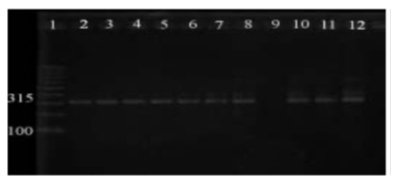
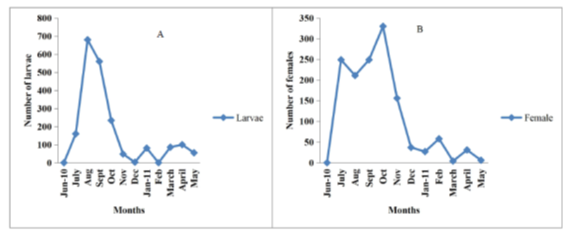
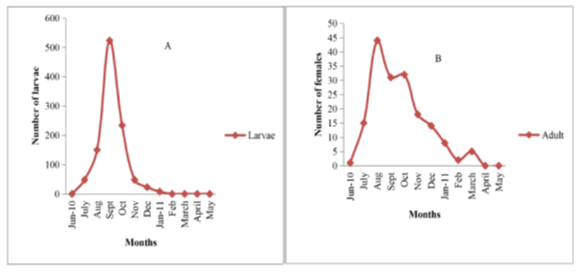
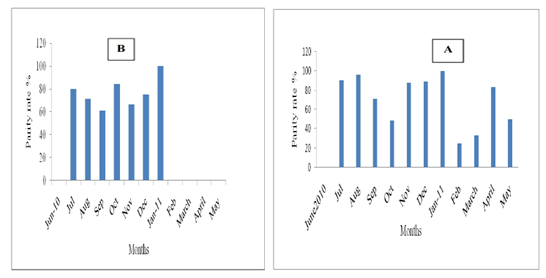
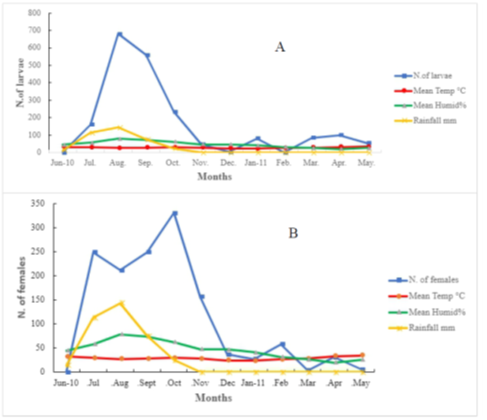
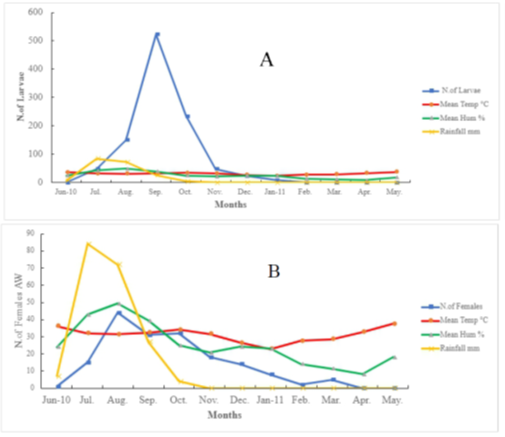

 Impact Factor: * 4.1
Impact Factor: * 4.1 Acceptance Rate: 75.32%
Acceptance Rate: 75.32%  Time to first decision: 10.4 days
Time to first decision: 10.4 days  Time from article received to acceptance: 2-3 weeks
Time from article received to acceptance: 2-3 weeks 